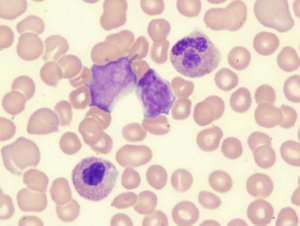Disease and healthcare predictions for 2025
5 min read
Imagine a future where diseases are predicted before they even strike, treatments are tailored to your unique genetic makeup, and technology seamlessly integrates with healthcare. What once seemed like science fiction is rapidly becoming a reality.
A recent report by global consulting firm Deloitte paints an optimistic picture of the healthcare landscape in 2025. By analyzing the impact of the COVID-19 pandemic and emerging trends, Deloitte has identified ten key predictions that could reshape the future of health and wellness.
Report
Deloitte’s latest report provides a forward-looking perspective on the healthcare industry. By analyzing current trends and potential obstacles, the report offers insights into how patients, healthcare organizations, and life science companies might continue evolving post-pandemic.
Demographic trends
By 2025, the global population of individuals aged 65 and older is projected to reach 840 million, accounting for 11% of the global population and 21% of the European population. As a result, the demand for healthcare services is poised to rise substantially.
Market trends
The global telemedicine industry, once projected to grow at a 15% annual rate, is now expected to surge at a faster pace of 19.3% per year, reaching a value of U$175.5 billion by 2025. Similarly, the virtual diagnostics market is expected to expand at a substantial rate of 15.5% per year until 2030.
Disease trends
The report delves into the types of diseases that may impact our health in the post-pandemic era, ranging from mental health conditions to infectious and chronic illnesses. It also highlights specific communities that may be disproportionately affected by increased mortality rates.
Mental health
Globally, mental health challenges affect a significant portion of the population, with at least 10% of people experiencing mental health disorders. This impact is particularly concerning for children and adolescents, with 20% suffering from some form of mental health condition.
The COVID-19 pandemic exacerbated global mental health challenges that have lingered and are expected to continue in 2025. A study by CARE International across 40 countries revealed that 27% of women and 10% of men reported a worsening of their mental health.
Antimicrobial resistance
Antimicrobial resistance (AMR) is a growing global health crisis, claiming approximately 700,000 lives annually. This number is projected to soar to 10 million by 2050, with an estimated economic cost of a staggering US$100 trillion.
Diabetes
The number of people with diabetes is projected to increase from 463 million to 578 million by 2030 and 700 million by 2045. The annual cost of treating diabetes is estimated at US$760 billion and is expected to reach $825 billion by 2030 and $845 billion by 2045.

Death rate
Individuals aged 70 and older, as well as those from Black, Asian, and Minority Ethnic (BAME) communities, have been disproportionately affected by higher death rates in most countries.
Healthcare and healthy aging
By 2025, the report forecasts a shift towards proactive healthcare. More individuals are expected to be well-informed about their health risks and actively engage in preventive care rather than solely relying on reactive treatments.
Healthcare and healthy aging
This trend will accelerate as individuals increasingly leverage technology to monitor their health. By utilizing wearable devices, health apps, and genetic testing, people will gain deeper insights into their health risks and tailor their wellness strategies accordingly.
Public health
The report expresses optimism regarding global health priorities in 2025. It anticipates that governments will prioritize public health, investing in targeted preventive interventions and robust outbreak response strategies. The report highlights the growing potential of digital health solutions, including mental health apps, SMS support for smoking cessation, and digital immunization passports. These technologies, when supported by government initiatives, can improve access to healthcare and enhance public health outcomes.
Diagnostics and treatments
The future of medicine, as outlined in the report, is based on a ‘4P’ approach: predictive, preventative, personalized, and participatory. By leveraging hyper-personalized data-driven insights, clinicians can proactively identify health risks and tailor treatments. With the aid of advanced technologies, clinicians and patients can collaborate to develop personalized care plans.
Digital therapeutics, AI, and health data are revolutionizing healthcare. Clinicians can now access a wealth of patient data from multiple sources such as wearable devices and electronic health records to gain valuable insights into patients’ health. This includes vital signs, physiological biomarkers, and environmental factors like weather conditions and pollution levels.
Ways of working
The future of healthcare will be shaped by lifelong learning and advanced technologies. AI-powered robotics, cognitive automation, and digitalization will streamline administrative tasks, allowing healthcare professionals to focus on complex, patient-centered care. Healthcare professionals will leverage technology like virtual reality to enhance their skills. They will also be well-prepared to interpret AI-powered diagnostic results. Additionally, physical robots will increasingly assist in tasks such as medication delivery, vital sign monitoring, and even remote and robot-assisted surgeries.
People-centered care
The healthcare landscape is shifting towards a more patient-centric model, prioritizing individual needs over physical locations. Digital triage, telehealth, AI-powered tools, and remote monitoring will enable personalized care, regardless of location. Healthcare providers are expected to collaborate seamlessly across different clinics and hospitals to deliver comprehensive care. Pharmacists, empowered by automation and AI, will take on expanded roles, including diagnosing, prescribing, and managing chronic diseases.
Connected devices
MedTech companies will play a pivotal role in shaping the future of healthcare by evolving their offerings beyond traditional equipment. By focusing on software, sensors, and analytics, these companies will enable preventative care tailored to specific patient populations. Companion diagnostics will play a crucial role in personalizing patient care. As trust in these devices grows, connected medical devices will bridge the gap between patients and healthcare providers, enabling real-time monitoring and personalized treatment plans.
Drug discovery and clinical trials
In 2025, AI will revolutionize drug discovery and clinical trials, boosting efficiency and cutting costs. AI-powered tools will accelerate the identification of novel biomarkers and drugs, leading to a deeper understanding of disease mechanisms. As a result, a larger portion of drug pipelines will target specific, rare diseases. Quantum computer simulations and advanced data visualization will accelerate decision-making throughout the clinical trial process. By streamlining this process, new medications can reach patients faster and more cost-effectively.
Pharma supply chain
In 2025, advanced analytics and AI are predicted to revolutionize the pharmaceutical industry by optimizing demand forecasting, inventory management, logistics, and restocking processes. These technologies will reduce costs, improve efficiency, and minimize human error. Real-time tracking of medications, particularly temperature-sensitive ones, is crucial for ensuring safe delivery and administration. Advanced tracking software is set to become more common, enabling the monitoring of products from packaging to distribution, and allowing timely interventions in case of any issues.
Sustainable healthcare
In response to global sustainability goals, healthcare organizations are expected to prioritize environmental initiatives in 2025. This includes phasing out fossil fuels, adopting green energy sources, and increasing the use of reusable medical instruments whenever possible. By prioritizing out-of-hospital care, prevention, and population health, healthcare systems can reduce patient journeys and associated carbon emissions. Virtual care models, such as remote monitoring and electronic prescriptions, are expected to play a key role in achieving these goals.
Partnerships for innovation
The report expects that strong partnerships between industry, academia, and healthcare providers, supported by government initiatives, will drive innovation in medicine and technology. Collaborative efforts will accelerate the development and adoption of new treatments and devices. Data sharing among healthcare professionals, researchers, and universities is predicted to accelerate research and reduce costs. Additionally, partnerships between MedTech, telecom companies, and healthcare providers will enhance 5G network connectivity, enabling critical care and remote robotic surgery in remote areas.
Source: Disease and healthcare predictions for 2025




